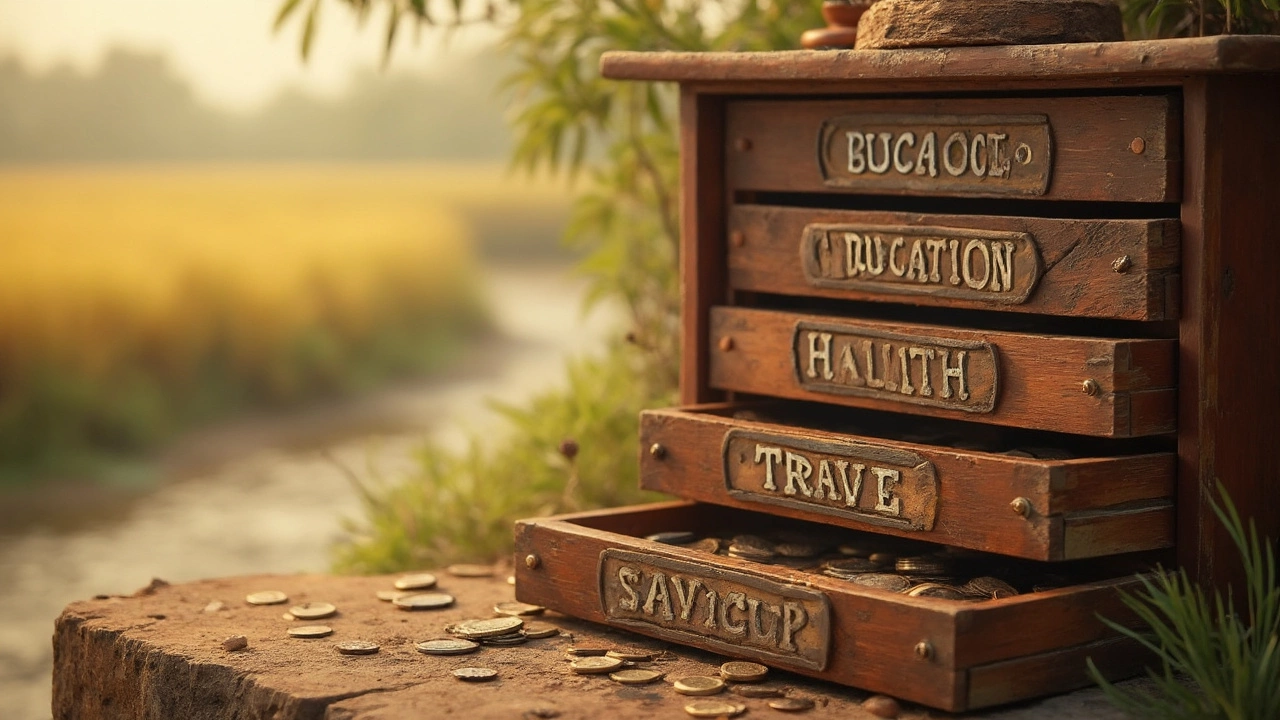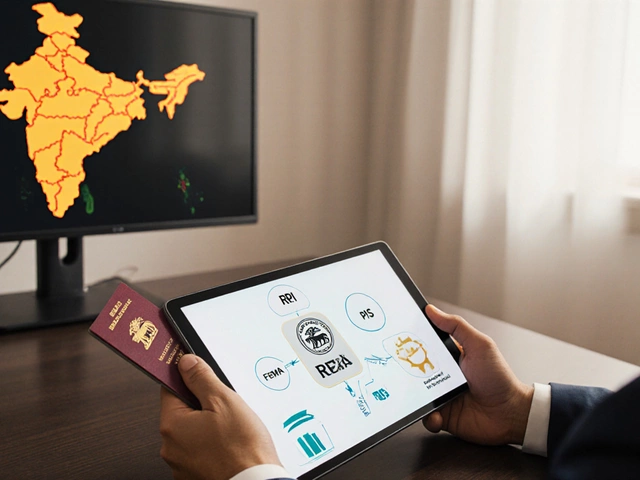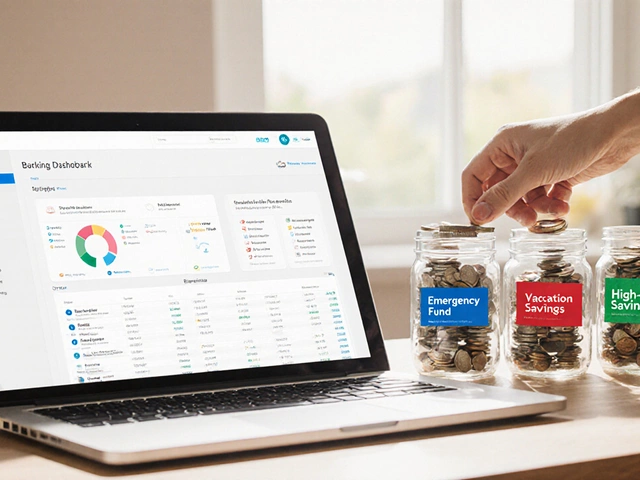
Ever thought about how much money you should leave chilling in a savings account? It’s an important question, especially when you've got more than pocket change lying around. Most people think parking their cash is the safest bet, but is it really?
Sure, savings accounts are awesome for tucking away funds with a bit of interest on the side and they're risk-free - thanks to bank protection schemes. But here’s the kicker: too much in one spot might mean you're losing out on big financial gains elsewhere or risking bank insolvency without noticing. It’s like putting all your eggs in one basket. You wouldn't want that, would you?
- The Appeal of Savings Accounts
- Potential Pitfalls of Overstuffed Accounts
- Diversifying Your Savings
- Deciding the Right Amount
- Smart Banking Moves
The Appeal of Savings Accounts
Before digital wallets and fancy investing apps were all the rage, good ol' savings accounts were the go-to option for storing cash. What’s the big deal? Well, these accounts are like a comforting safety net, just sitting there with your hard-earned cash chilling until you need it. You can sleep easy knowing that your money won’t vanish overnight because banks provide government-backed protection up to $250,000 per customer per bank in many places.
Another feather in the cap: these accounts generally offer a bit of interest. Okay, maybe it won't make you rich overnight, but it's better than leaving it under your mattress, yeah? Even if the interest rates aren’t climbing mountain peaks, they’re still a safe bet for conservative savers.
Let's not forget accessibility! Need to cover an unexpected bill or book that spontaneous getaway? Your funds are just a withdrawal away. And guess what? You avoid fees that might sneak up on you in some other types of accounts or investments.
You also have the power to set yourself up with automatic transfers. Picture this: each payday, a chunk of your salary slides quietly into your savings, helping you reach goals without lifting a finger. It’s like having your own little financial assistant.
To put it simply, savings accounts are super easy, super secure, and great for the peace of mind they offer. Just be mindful of the fact that their reliability might also tempt you to put too much in them, which can lead to missed opportunities for higher returns elsewhere.
Potential Pitfalls of Overstuffed Accounts
Piling too much money into a single savings account might sound like a smart way to watch your wealth grow safely. But think again—there are some drawbacks lurking you might not have thought about.
First off, if you surpass the government’s deposit insurance limit, all that extra cash isn't as secure as you might believe. In Australia, for example, the Financial Claims Scheme only covers deposits up to AUD 250,000 per account holder per institution. Stick more in there, and you’re rolling the dice a little bit.
Then there’s the issue of opportunity cost. With interest rates often being lower on standard savings accounts, you could be missing out on higher returns by sticking with lucrative options like stocks, bonds, or even certificates of deposit.
No one wants to have their funds sitting idle, especially when inflation can slowly chip away at the value of your money over time. Sure, your savings will still grow, but likely not as fast enough to outpace inflation.
Lastly, consider the lack of flexibility. If all your savings are locked up in one spot, accessing them in an emergency might get tricky, especially if it means ditching the account for higher liquidity.
Take a moment to assess what's really best for your hard-earned cash before maxing out your banking options.

Diversifying Your Savings
If you're serious about making the most out of your cash stash, mixing up where you keep your savings can be a game-changer. Throwing all of your money into just one savings account? Not always the smartest move. Spreading it around can actually give you more stability and even better returns.
Diversifying is like casting a wider net. It lets you grab opportunities you’d miss if every dollar lived in a single account. For instance, interest rates aren’t the same everywhere. Some online accounts can offer rates that are double or even triple the norm. Makes you think, right?
And it's not just about getting better interest rates. There's also the aspect of security. Different financial institutions might offer different levels of protection. By diversifying your savings, you can minimize the risk of bank failures affecting you. As someone once said,
"Don't put all your eggs in one basket."
Here's the scoop: dividing up your savings is just smart money management. Consider putting some cash in a high-interest account, some in a fixed deposit, and maybe even explore other financial products like bonds or mutual funds. The mix could look something like this:
- 50% in a high-interest savings account
- 20% in fixed deposits for security and better returns
- 15% in stocks or mutual funds for higher risk but higher reward
- 15% kept flexible for emergencies
Okay, so it's not exactly shopping at a sale, but diversifying is a clever way to think of your money growing in different places. Plus, if one part tanked, the others could keep your financial boat afloat. It’s really all about balance and making sure you're not stuck if one avenue doesn’t perform as expected.
Deciding the Right Amount
So, how much should you actually keep in your savings account? There's no one-size-fits-all answer, but it's all about balance, my friend. Start by considering an emergency fund. Experts often suggest saving up at least three to six months' worth of expenses. This ensures you've got a cushion if life's curveballs make an unexpected visit.
Money management isn't just about socking it all away but doing so wisely. Beyond your emergency stash, you might want to take advantage of other investment options with higher returns.
- Assess what's your monthly spend. Multiply that by at least three.
- Consider your job security. Less stable means saving closer to six months.
- Add large predictable expenses – weddings, college, travel– to your savings goals with a buffer.
Avoid stuffing more than $250,000 in one account. It might sound like a good problem to have, but anything above that limit isn't insured by the FDIC. Imagine if your bank had a hiccup and folded—only the first quarter million would be covered.
Always keep an eye on the interest rates, too. While not sky-high, even a tiny bump can fatten up your savings over time, making every cent count.
Got different needs and goals? Consider spreading your funds across various accounts. This way, you're not just protecting your wealth but potentially growing it by investing in accounts with better yields or tax advantages.

Smart Banking Moves
When it comes to making your money work harder, it’s all about the right banking moves. So, you're sitting on some serious cash in your savings account, but how can you tweak things just right? Let’s lay out some practical steps.
First up, consider the benefits of setting up multiple savings accounts. It’s like using the envelope system but in the digital world. You could have one for your emergency fund and others for specific goals like a vacation or new wheels. Most banks have no fees for additional savings accounts, and it helps you stay organized.
Also, ever heard of a high-yield savings account? These accounts offer a bit more bang for your buck in terms of interest rates. While standard ones might give you peanuts, high-yield options could offer rates that are over ten times higher. That’s free money right there!
While moving stuff around different accounts, don’t forget about bank insurance limits. In Australia, accounts are generally protected up to $250,000 thanks to the government's Financial Claims Scheme. If you have more than that, split your wealth across different banks to keep it safe. Here's a quick look at what big banks offer:
| Bank | Insurance Limit |
|---|---|
| Commonwealth Bank | $250,000 |
| ANZ | $250,000 |
| Westpac | $250,000 |
Lastly, don’t forget to set up automatic transfers. It takes the guesswork out and helps you avoid the temptation to dip into your stash for impulsive buys. Just decide how much you want to save each month and let the bank handle the rest.
So, tighten those laces and make those bucks run a little faster! With these tips, you'll be ahead of the game in no time, enjoying the perks of smart banking and knowing your money is in safe hands.







Write a comment